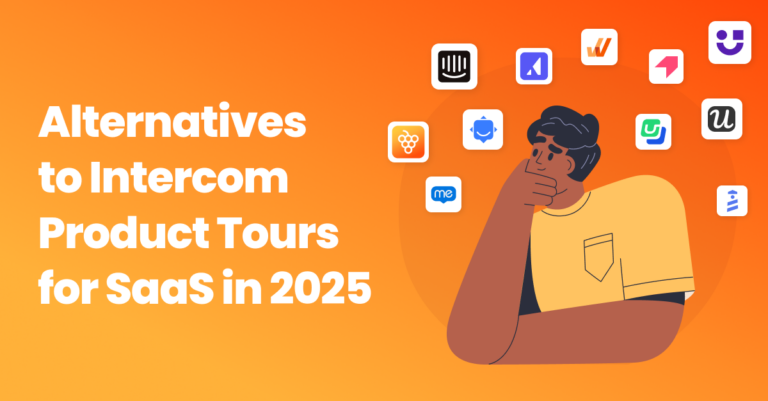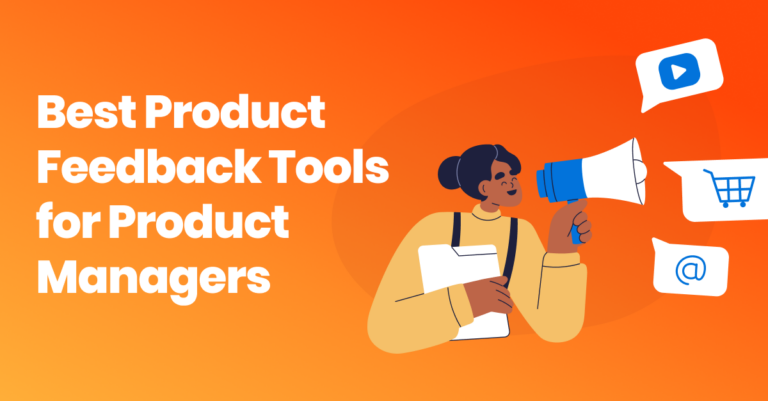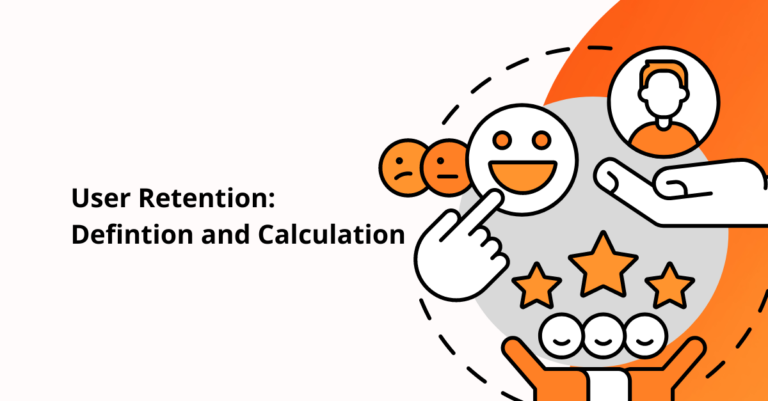Think of the user onboarding process as a trailer for a movie.
It’s the first glimpse of a movie story and has the power to catch your attention, or make you skip to the next movie.
The same applies to user onboarding – it’s an opportunity to grasp your audience and show them the value of your platform.
And that’s why it’s crucial to understand how well your onboarding process is doing, because well… it could mean you’re leaving potential users – and profit – on the table.
Understanding which user onboarding metrics to track will help improve the experience of users on your platform. Which leads to higher conversion rates, more engagement, and longer customer loyalty.
Why is it important to track user onboarding metrics?
Over 82% of Enterprise companies rate onboarding experience as a key drive of value for a company, a study by Precursive found. But without keeping track of the right metrics, the value of your onboarding experience quickly becomes foggy.

By keeping track of onboarding metrics, you get direct insight into how your users actually feel and interact with your platform.
This allows you to identify areas for improvement to ensure that customers have a positive first impression of your brand.
Case in point; with user onboarding data, you can accurately optimize the user onboarding experience.
What’s the goal of tracking user onboarding metrics?
Improving user onboarding without data is like attempting to paint a picture in the dark– you can’t. You don’t have accurate reference points or a clear direction.
However, with clear metrics, you can:
- Identify user engagement levels: Understand the level of interaction users have with certain features. This helps identify strengths and weaknesses in the onboarding process.
- Improve user experience: Pinpoint where users might struggle and make necessary improvements.
- Reduce user churn: Identify why users might abandon a platform and take steps to prevent churn.
- Increase customer retention: Understand user behavior during the onboarding process to create strategies to improve customer loyalty.
- Enhance product development: Provide valuable insights into how your product is used, aiding in the development of new features and improvements.
Don’t know how to start? Let Product Fruits give you all the tools, data, and insights to help improve your onboarding experience in one place.
1. Activation rate
The activation rate measures the percentage of users who complete all the steps necessary for signing up and using your product.
Above all, it’s a key metric that shows how successful your onboarding process is at getting users started and active on your platform.
Measure activation rate by:
Activation rate = (Activated users / total number of registered users) x 100
By keeping an eye on your activation rate, you understand if the user onboarding process is helpful and engaging. If your user rate is on the decline, it’s usually a symptom of malpractices when it comes to user experience and intuitive platform features.
2. Retention rate
Retention rate measures the number of users who continue to stay active and engaged with your product or service over time.
This metric is useful to understand how well users respond to your onboarding process, and whether or not they become returning customers or just one-time users.
Calculate activation rate by:
Retention rate = remaining users/ initial number of users
Your goal should be to continuously improve your user retention rate, especially in the first 30 days, as 64% of users churn within the first month.
By supporting your user’s onboarding experience and guiding them to the full value your app provides with timely features and support, you can improve your retention rate.
3. Engagement rate
The engagement rate measures the number of active users that come back to use your product or service regularly. This metric is a great way to track how successful your onboarding process is at getting repeat users.
Calculate engagement rate by:
Engagement rate= Active users/users in a cohort
When calculating engagement rate, there are a few things to keep in mind:
- Divide users into different groups based on when they started onboarding.
- Check how often your users open the app. It could be weekly, monthly, or daily.
It’s important to remember that some platforms will naturally have different lower engagement and active usage rates. For example, consider AirBnb, a platform used to book holiday rentals. Active users will only use the platform when they’re booking their holidays a couple times of year. So it’s normal that their engagement rate might be different than a weather app used daily.
4. Referral rate
The referral rate measures the number of users that refer your product to others.
After all, word-of-mouth is the crème de la crème when it comes to marketing and social proof. This metric proves if your onboarding process has turned users into advocates for your product or service.
Calculate referral rate by:
Referral rate= Number of referred accounts/ total number of accounts
Fruity Tip: Consider encouraging or providing incentives for users to share your app with others using a referral code with an incentive.
5. Free trial conversion rate
Free trial conversion rate measures the percentage of users that convert from a free trial to a paid subscription.
This metric proves how successful your onboarding process has been at providing users with the value of your platform up front. It is a direct reflection of how easy it is for your app to fulfill its challenges.
Calculate your free trial conversion rate by:
Free Trial conversion rate = Number of free trial to paying customers/ Number of total trial users
6. Time to value aka the “aha” moment
The time to value (TTV), lovingly called the “aha” moment, is another key metric to look out for. This metric measures the time it takes for users to understand and experience the value an app offers.
By tracking this data, you can identify any friction points in the onboarding process. The goal is to remove any unnecessary steps to reduce the time it takes for users to get to the “aha” moment.
Calculate time to the “aha” moment by:
TTV= Time for users to reach their first “aha” moment*
*This time could be measured using minutes, clicks, steps, or logins.
By tracking these user onboarding metrics, you can gain valuable insight into the success of your onboarding process and ensure that users are having an optimal experience with your product or service.
By leveraging this data, you can make necessary changes and improve the steps of your user onboarding.
To improve user onboarding metrics, you need customizable onboarding features.
Now that you understand which metrics to track, it’s time for the real action.
The next step is to improve these metrics. That means a whole lot of testing, feature tweaks, and time, but above all consistency.
And that’s where it can get tricky. Between the time it takes for developers to add new onboarding features, integrate analytics, and actually improve your user onboarding, months can go by and with it users.
To consistently improve user onboarding metrics, you need an onboarding solution that is malleable, flexible, and all-inclusive when it comes to analytics. And that’s where a solution like Product Fruits steps in.
With Product Fruits, you add an invisible onboarding layer to your platform. That means that if you notice users getting stuck on a certain feature, you can simply drag n’ drop a hint feature to support your user through your platform– no coding required.
By having a customizable onboarding feature at your fingertips, it means you can test, analyze, and optimize your onboarding process to successfully engage users.
Interested in trying different features to improve your user’s onboarding experience?
Try Product Fruits for free, with no commitment and no card required — We’re just that confident we can help.







